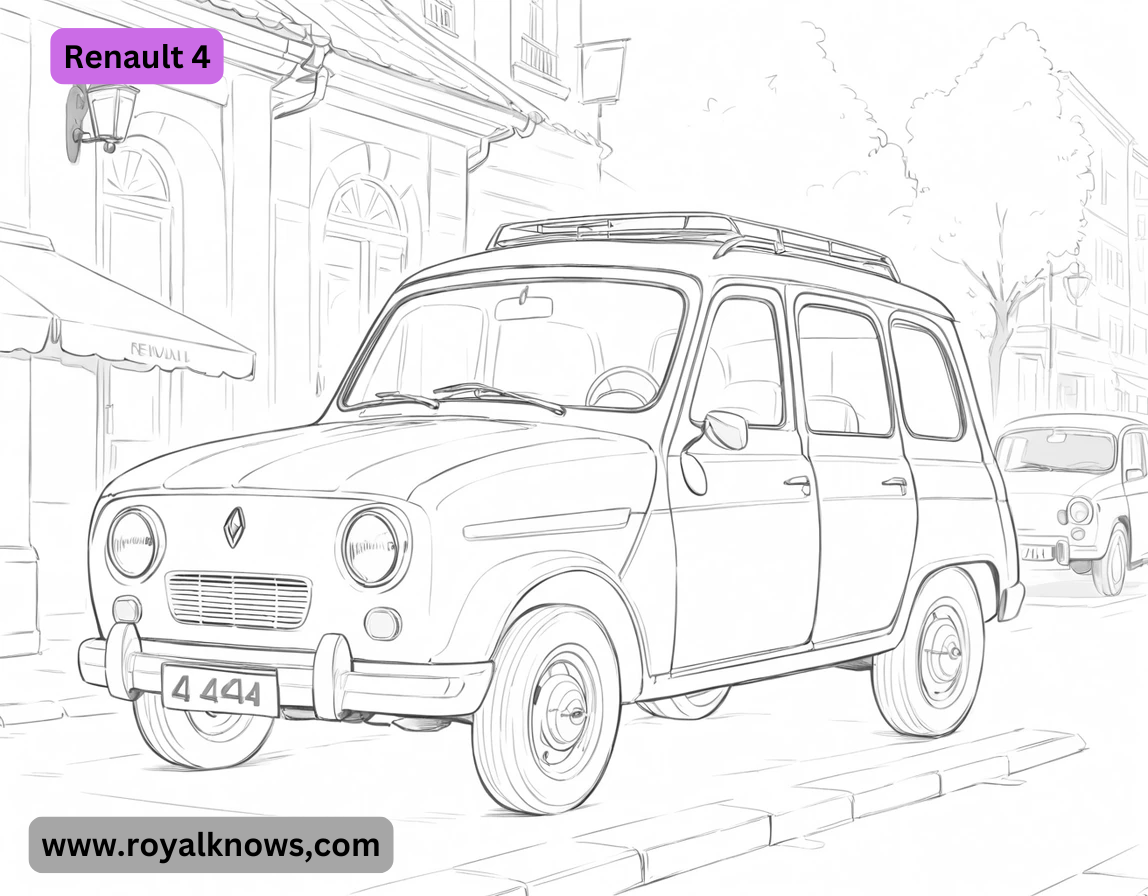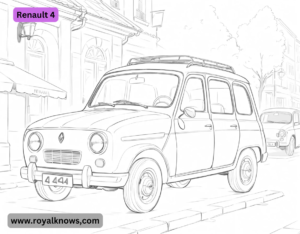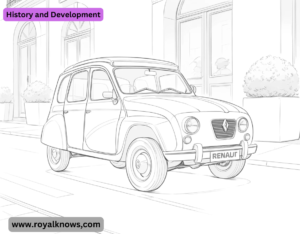Renault 4 The Renault 4, produced from 1961 to 1994, was a revolutionary compact car known for its practicality, affordability, and durability. With over 8 million units sold globally, it featured a front-wheel-drive system, hatchback design, and torsion bar suspension, making it ideal for both urban and rural use. Its iconic status endures as a symbol of simplicity and innovation.
Key Features:
- Design: The Renault 4 featured a simple, utilitarian design with a boxy shape, making it practical and spacious for its size. It had a hatchback body style, which was relatively innovative at the time.
- Front-Wheel Drive: The Renault 4 was one of the first mass-produced cars with front-wheel drive, which improved traction and interior space.
- Popularity: The Renault 4 was a global success, particularly in Europe, Africa, and South America. It was praised for its affordability, reliability, and practicality.
Legacy:
- The Renault 4 is considered an iconic car in automotive history, often compared to the Citroën 2CV for its simplicity and practicality.
- It was produced for over 30 years, making it one of the longest-running car models in history.
- Today, the Renault 4 has a strong following among classic car enthusiasts and is celebrated for its nostalgic charm and historical significance.
History and Development
- Concept: The Renault 4 was developed as a response to the success of the Citroën 2CV, which had dominated the market for affordable, utilitarian cars. Renault aimed to create a car that was equally practical but more modern and comfortable.
- Launch: It was unveiled at the 1961 Paris Motor Show and went into production shortly after. It was marketed as a “blue jeans” car—simple, durable, and versatile.
- Production: The Renault 4 was produced from 1961 to 1994, with over 8 million units sold worldwide. It was manufactured in France, as well as in other countries like Spa Bin, Portugal, Argentina, and Colombia.
Technical Specifications
- Engine: The Renault 4 initially came with a 747 cc water-cooled engine, producing around 22 horsepower. Over the years, engine options expanded to include:
- 845 cc (32 h p)
- 956 cc (34 h p)
- 1108 cc (34–42 h p)
- Transmission: It featured a 4-speed manual gearbox, with the gear lever mounted on the dashboard.
- Suspension: The car used a torsion bar suspension system, which provided a relatively comfortable ride even on rough roads.
- Dimensions: It was compact, measuring around 3.66 meters (12 feet) in length, but offered surprising interior space due to its boxy design.
Variants and Special Models
- Renault 4L: The standard hatchback model, which was the most popular version.
- Renault 4 SINPAR: A 4×4 version designed for off-road use, often used in rural areas and by military forces.
- Renault 4 PLEIN Air: A beach buggy-style model with no doors or roof, designed for leisure use. It was not a commercial success but is now a rare collector’s item.
- Renault 4 F4/F6: Panel van versions for commercial use, with no rear seats and extended cargo space.
- Renault 4 GTL: A later model (1980s) with a more powerful 1108 cc engine and improved features like a rear window wiper and upgraded interior.
Cultural Impact
- Europe: As a family car and urban runabout.
- Africa: For its durability and ability to handle rough terrain.
- Pop Culture: The Renault 4 appeared in numerous films, TV shows, and advertisements, often portrayed as a quirky, reliable, and lovable car.
- Enduring Legacy: Even after production ended in 1994, the Renault 4 remained a beloved classic.
Why Was It So Popular?
- Affordability: It was one of the most affordable cars of its time, making it accessible to a wide audience.
- Practicality: The hatchback design, spacious interior, and versatile seating made it ideal for families and small businesses.
- Durability: Its simple mechanical design made it easy to repair and maintain, even in remote areas.
- Comfort: Despite its utilitarian nature, it offered a relatively comfortable ride compared to competitors like the Citroën 2CV.

Fun Facts
- The Renault 4 was the first car to feature a hatchback design, which later became a standard feature in modern cars.
- In 2023, Renault announced plans to revive the Renault 4 as an electric vehicle (EV), paying homage to the original while adapting it for the modern era.
Collect IBILITY
- Today, the Renault 4 is a sought-after classic car. Well-preserved models, especially rare variants like the PLEIN Air or SINPAR 4×4, can fetch high prices at auctions. Enthusiasts appreciate its simplicity, charm, and historical significance.
Technical Innovations
- Front-Wheel Drive: The Renault 4 was one of the first mass-produced cars with front-wheel drive, which improved traction, handling, and interior space. This layout became a standard for modern cars.
- Unibody Construction: Unlike many cars of its era, the Renault 4 used a mono Coque (unibody) chassis, which made it lighter and more rigid.
- Torsion Bar Suspension: The car’s suspension system used torsion bars instead of traditional coil springs, providing a smoother ride on rough roads. This made it ideal for rural and off-road use.
- Hatchback Design: The Renault 4 was one of the first cars to feature a hatchback (a rear door that opens upward), which became a defining feature of modern compact cars.
Symbol of Freedom
- Rural Communities: In rural areas, the Renault 4 was often the first car families could afford, providing access to transportation and opportunities.
- Urban Use: In cities, it was a practical and economical choice for navigating narrow streets and tight parking spaces.
- Global Icon: From the streets of Paris to the deserts of Africa, the Renault 4 was a common sight, representing resilience and adaptability.
Renault 4’s Influence on Modern Cars
The Renault 4’s design and engineering principles influenced many modern cars:
- Hatchback Design: The Renault 4 pioneered the hatchback layout, which is now a standard feature in compact cars.
- Front-Wheel Drive: Its front-wheel-drive system became the norm for most passenger cars.
- Modular Interior: The Renault 4’s flexible seating and interior space inspired modern cars with modular interiors.
Renault 4 Revival: The Electric 4L
In 2023, Renault announced plans to revive the Renault 4 as an electric vehicle (EV). The new model, called the Renault 4Ever, pays homage to the original while incorporating modern technology:
- Design: The electric version retains the boxy, utilitarian design of the original but with a modern twist.
- Electric Powertrain: It will feature a fully electric drivetrain, making it eco-friendly and suited for urban environments.
Get article on pdf file…Click now
………………Renault 4…………..


